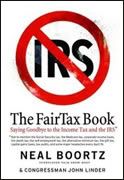 The days of a newsboy standing on the corner yelling "Extry, extry!" are long gone. And maybe that's not a bad thing.
The days of a newsboy standing on the corner yelling "Extry, extry!" are long gone. And maybe that's not a bad thing.I've worked with and around newspapers most of my life. Starting when I was about 10 years old I delivered newspapers in Colorado Springs at Peterson Air Force Base. Skip a few years, a couple of very short part-time jobs, and I picked up another newspaper job -- working in the distribution department of the Sun Herald (Biloxi) putting inserts in the paper. I worked as a photojournalist/public affairs specialist for nearly 10 years in the Army and am now an editor for a Marine Corps base newspaper.
Things have changed a lot. Most of what I'm going to bring up will be anecdotal, as I'm far too lazy to do any research. Suffice to say that most of what I'm going to bring up is blindingly obvious to those of us in the field and also to most people outside.
Our news delivery system is changing. "Well, duh, Cullen. Tell us something we didn't know." Okay, smartass, how about this ... have you noticed the change in ratio of editorial and advertising copy? As little as 7 years ago, you could count on a pretty even split, with editorial copy even edging out ad copy in some cases. However, take the time to figure out ad copy these days (yes, Virginia, classifieds count as ad copy too). You're lucky if you're paper is getting 60 percent (ad) to 40. Our local fishwrap is about 70-30 most days. This is an average and fluctuates daily.
See the kind of things I spend my time doing when I'm really bored! Actually, it's important for a newspaper guy to note as ad and editorial copy have always been at odds with one another. And any shift in copy balance is significant. Used to be that subscription sales helped offset the cost of production and lead to profit. These days, as the cost of paper and ink continues to increase, subscription sales account for less and less of a publishing company's revenue. Advertising fills in that gap and is the backbone of newspaper profits.
So, if newspapers are getting so expensive to produce, and they are increasingly having to rely on advertising to make a profit, why do we still have newspapers? This is the question every newspaper person has been asking since TV and Radio news started cutting into their market share. The easy answer used to be that newspapers will always offer better and more in-depth coverage than TV or Radio can. While that is still true, the internet has turned everything on its ear. It can offer the in-depth, insightful coverage of a newspaper with the speed of TV and Radio. Faster in some cases since production of post-worthy copy can happen faster than cutting together a TV or Radio broadcast. Though, of course, TV and Radio still have the edge in live coverage.
So, my answer these days? As long as people want to hold an advertising circular in their hands, as long as people want to get those coupons in their Wednesday and Sunday papers, there will be a newspaper. So, what has been the anathema of many news room editors is their salvation. Without a public demand for these ads, there would be no newspaper (at least, not much longer).
That said, editorial copy is still shrinking. What made me think of all this today was a report that the Wall Street Journal is shrinking pages to cut costs. The WSJ is a huge, profit-making machine and they’re cutting costs. This should be sending waves of concern through the print establishments. Whenever a bigwig makes significant changes, it usually means that the others are going to as well. It’ll be interesting in the next couple of months to see what else might arise from this.




No comments:
Post a Comment